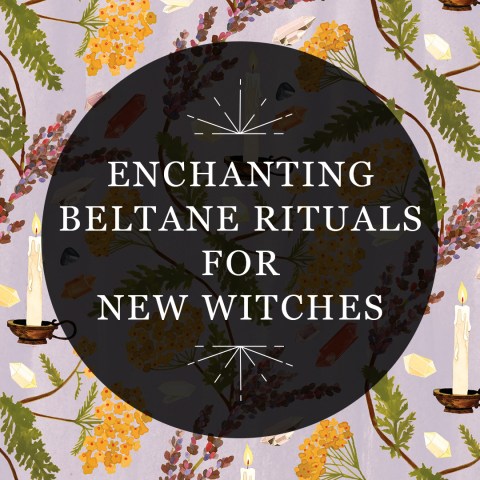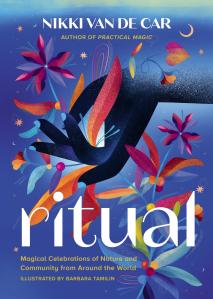Magical Celebrations for Spring from Ritual by Nikki Van De Car
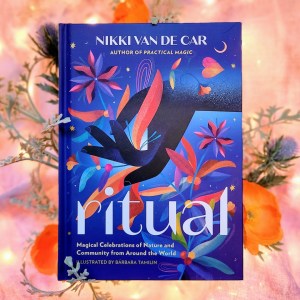
Nikki Van De Car’s newest magical book, Ritual: Magical Celebrations of Nature and Community from Around the World, explores the rich history and meaning behind cherished ritual celebrations from around the world, organized by season. Each featured celebration includes ideas for participating in and appreciating these storied rituals, while honoring their origins and cultures from which they come.
About the spring season, Nikki writes, “Spring is a time of renewal, new beginnings, possibility, and growth. It is when we step out from the darkness of winter and bask in the cool breeze and budding life around us. It is a jumping forward with new energy, and this remains true no matter where on earth you find yourself.” She continues, “The ways in which we celebrate and understand this balance between day and night, this shift from winter to spring, can vary from culture to culture. Sometimes there is a story about the old becoming new or of rebirth. Often there are eggs involved. And so much of the time, there is joy, hope, and a sense of play—and isn’t that what magic is all about?”
Here, we’re showcasing just a few of the springtime celebrations from around the globe featured in Ritual, along with ways you can celebrate at home.
Baba Marta Day
March 1

Baba Marta is a character of Bulgarian folklore, a fiery figure who, like the rest of us, is impatient with her brothers January and February. When Granny March does her spring cleaning and shakes out her mattress, the feathers that fall are the last snowfall of the year.
Of course, we’ve all been hopeful that one particular snowfall will be the last and been disappointed when another falls. So, on March 1, people in Bulgaria and some parts of Serbia exchange something called martenitsi on Baba Marta Day. These little bracelets are made of red and white yarn on which little thread dolls are strung—a man made of white string, Pizho, and a red-dressed woman, Penda. Together, red and white symbolize good health, with white standing for purity and red for life and passion. A martenitsa may also symbolize the melting snow and the rising sun in balance.
A martenitsa must always be given as a gift, not made or bought for yourself. You can wear it around the wrist or the neck or pin it to a jacket. As soon as you see a sign of spring, whether that’s a bird returning north, a tree blossoming, or a flower poking up from the ground, then Baba Marta is in a good mood at last, and spring is truly here.
At that point, the martenitsa is removed. It can be tied onto a fruit tree to pass its good health on to the plant. Or it can be placed beneath a rock, and the creature that is found under the rock chosen can foretell how the coming year will go: If it is a worm, then the crops will be good. If it is an ant, then your hard work will pay off.
Ways to Celebrate
Make your own martenitsi to give and share with others! They can be quite simple, and Pizho and Penda can hang from them like little charms.
Watch for signs of spring, and be sure to place your martenitsa with care, whether it is hung on a tree or tucked beneath a stone.
Shake out your blankets and mattresses to signal that you are ready for the last snowfall.
Ostara
The Spring Equinox
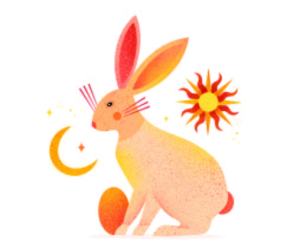
The celebrations of the equinox found in Wiccan or druidic traditions are known as Ostara, or Alban Eilir. There are a number of deities honored on this day, including Eostre, a goddess of spring. She’s a somewhat mysterious goddess—it’s unknown who exactly worshipped her or even necessarily what she represented. Jacob Grimm, collector of fairy tales, theorized that she was a “divinity of the radiant dawn, of upspringing light,” which is a delightful image perfect for the spring equinox.
At some point, Eostre became associated with eggs and rabbits—note the linguistic similarity between Eostre and Easter—and with fertility.
If we think about the golden orb of the yolk as sun energy (traditionally viewed as masculine) and the amorphous white as moon energy (traditionally viewed as feminine), then the egg is balanced within itself, just as the day and night are in balance on the equinox. Certain legends centered around this time tell the story of a rabbit that could turn into a bird… which may be why the Easter Bunny leaves eggs for collection. As it happens, rabbits are often associated with the moon and fertility across a variety of cultures around the world. In this way, Ostara brings together the goddess of the dawn and the light of the moon.
While Ostara, like all spring equinox rituals, celebrates the balance between the day and night, it is more focused on Eostre’s association with fertility. In this celebration, the symbolism of an egg is that of potential—of new life and rebirth. Spring is here at last: new leaves are sprouting, the chill is leaving the air, and from here on out the sun will be brighter. The upspringing light has come.
Ways to Celebrate
Coloring and collecting Easter eggs is a wonderful way to celebrate Ostara, and in all likelihood, celebrating Ostara has been what you were doing all along.
Grimm also referred to baked goods made on Ostara as “pastry of heathenish form,” which is another delightful turn of phrase. You could make hot cross buns, or Easter Bread with colorful eggs snuggled in its twists.
One theory behind hot cross buns is that the cross will keep the devil out of your bread. You could maintain a balance by making deviled eggs to accompany them.
A note from RP Mystic: Learn more about Ostara with our blog post “The RP Mystic Guide to Ostara.”
Sham el-Nessim
The Monday After Easter
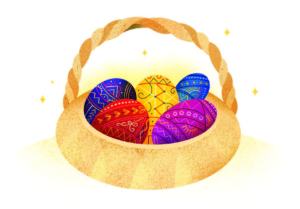
Sham el-Nessim translates to “inhaling the breeze,” which is a lovely way to think about taking a pause to acknowledge the change in season and to prepare for the work to come. The original Coptic name was Tshom Ni Tshom, which means “garden meadows.”
Although this Egyptian holiday is scheduled for the Monday following Easter, it is actually entirely secular, with no religious significance. In fact, it is one of the oldest known spring festivals, having been celebrated since at least 2700 BCE. Activities are limited, mostly centering around going to the beach or the park or simply sitting outdoors, picnicking on salted fish and lettuce and enjoying that pause, that spring-scented breeze. There may be dancing and music and other relaxing, joyful ways to spend the day.
However, celebrants do take the time to color eggs! Given the ancient history of this holiday, it’s likely that Sham el-Nessim is where the practice originated, before spreading throughout the world. In Egypt, as elsewhere, eggs symbolize rebirth and new beginnings. The eggs are boiled and dyed, and then decorated with written wishes. They are then given to others, or they are hung in baskets outside, casting the wishes on the wind.
Ways to Celebrate
The restful, simplistic nature of this holiday means that you can celebrate it simply by taking a pause. Sit outside and inhale the breeze, setting an intention for how you will engage with the coming spring season.
Go outside and have a picnic! Lay out on the blankets, looking for leaves just budding in the trees above you.
Write wishes on your eggs and leave them outside for a day or so to see what they invite.
Beltane
May 1
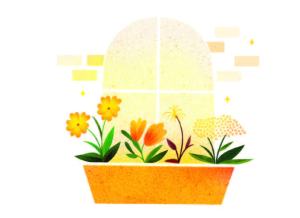
This end of spring celebration dates back to the Floralia, an ancient Roman festival that was a bit more pleasure-seeking and passionate than most—a flavor that has stayed with this ritual through its many incarnations. Maiouma, the ancient Greek version, was a celebration of Dionysus and Aphrodite, the gods of pleasure and love, respectively, so you can imagine the kinds of rites that supposedly went along with that.
As these Greek and Roman traditions made their way across Europe, the ways in which they were interpreted shifted to match the beliefs of the cultures they encountered. It is perhaps not surprising that when these licentious celebrations clashed with Christianity, some of the messaging went a little awry. In Germanic countries, May 1 is celebrated as Walpurgis, in dedication to St. Walpurga who saved her people from witchcraft. But given that May 1 was the day she had to do the saving, during the Renaissance it was believed that Walpurgis night was when evil was at its strongest. According to German folklore, witches would meet on the highest peak in the Harz Mountains to cast their spells or suchlike. The villagers would then light bonfires to drive them away.
In Portugal, May Day was equally focused on the potential of evil, as Maias was also known as Dia das Bruxas, or Witches’ Day. The yellow flowers of the broom plant were placed on all entryways, including doors, windows, and later even in cars to protect them from witches.
But in Gaelic and Celtic cultures, Floralia became known as Beltane, which translates to “lucky fire.” All household fires would be doused and the Beltane bonfire would be lit in each village, often by the most rudimentary and labor-intensive methods possible, to increase its power. A “needfire” was made by rubbing two sticks together, and it was from this small flame that all the other fires had to be kindled.
For Beltane, the bonfires were meant to be leaped over, both for luck and for protection from fairies. Cattle in particular were forced to jump over the fire, as May 1 was the day they were sent back out to pasture after the cold of winter—so they needed the protection of the flames. When the fires burned down in the morning, the ashes would be sprinkled on the crops.
Offerings were made to the fairies, often in the form of bannocks—small oatcakes made in the flames of the bonfire. Yellow flowers, including primrose, rowan, gorse, and hazel, were placed in doors and windows to evoke the protective nature of fire.
By the mid-eighteenth century, Christianity had found its way into Beltane, and the celebration became Mary’s Day. During this festival, statues of Mary were crowned with flowered wreaths and participants danced around a maypole—though no one quite knows the symbolism of that. Nowadays, May Queens are crowned with Mary’s wreaths. The Beltane Fire Festival is still held in Edinburgh, and some women still climb Arthur’s Seat, a possible location of Camelot found in the hills outside the city. On May 1, anyone who washes her face in the morning dew there will remain beautiful for life, rendering skin care products unnecessary.
At some point—likely during the rise of Neo-paganism movements—Beltane reached back to its passionate and pleasure-seeking origins in Floralia. Couples that had been married for a year and a day could remove their wedding rings on this night, and for that night alone be single once again—with all the freedom that implies.
Ways to Celebrate
Hang yellow flowers in your entryways, both for protection and luck.
Create a maypole and weave a dance around it! It’s surprisingly challenging to do it “right” and quite a lot of fun.
Light a bonfire—even a needfire, if you can!—though perhaps don’t jump over it. You can, however, bake a bannock as an offering to the fairies.
A note from RP Mystic: Learn more about Beltane with our blog post “Enchanting Beltane Rituals for New Witches.”
Featured Book
Nature is what gives us life—it is the source of all magic and power in the world. That is something that humans have understood since the beginning of time, and it is a constant among cultures around the world. However, the ways in which we celebrate it can vary wildly. Bulgarian Baba Marta Day welcomes the arrival of Spring with Martenitsas, little talismans of red and white string, while in Southeast Asia, that same yearly event is celebrated during Holi, a joyful, riotous dance of colors. Yalda, Soyal, Saturnalia, Dong Zhi, and St.Lucia’s Day (from Iran, Arizona, Ancient Rome, China, and Scandinavia) are all very different—but they all honor the Winter Solstice.
Each of these celebrations is a ritual, a form of magic created by community and tradition. And while their differences can help us understand their various cultural identities, their similarities can create a bond that reaches across space and time. In this beautifully illustrated book from bestselling magical author Nikki Van De Car readers will learn the history and meaning behind 40 of these ritual celebrations, organized by season. Each ritual will include suggestions for participating in and appreciating these storied rituals, while honoring their origins and the cultures from which they come.
Related Posts
Featured Post
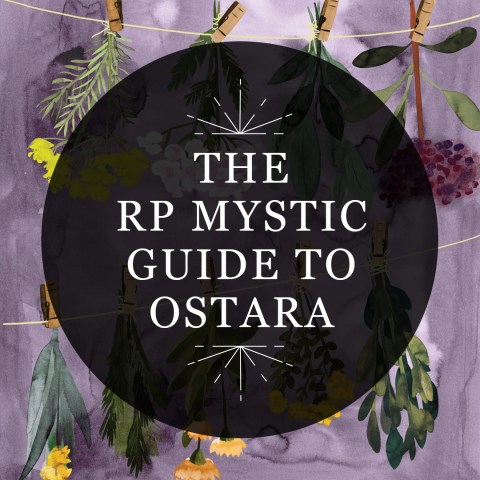
Featured Post
